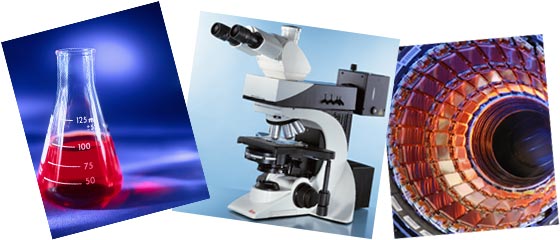 ![[Header]](../XuShared2/Line3.jpeg)

Add a Comment (Go Up to OJB's Blog Page) Fusion PowerEntry 1589, on 2013-11-12 at 21:02:27 (Rating 1, Science) If there was one single technological capability which would "solve all of our problems" it would be limitless, clean energy. If we had that we could resolve many current issues, including transport, food production, materials manufacturing, etc. So is the idea even feasible, and if it is, what is the answer?
Well of course if you know anything about technology at all you wil instantly think of fusion power, unless you jump into really crazy realms and go for quantum fields, zero point energy, and other exotic stuff. But there's no need for that because fusion is sufficient, at least for the next few million years (so it's not truly limitless).
A bit of background first. Fusion is a form of "nuclear energy" but has many advantages over the more common form, nuclear fission. These advantages include: the fuel is virtually limitless (hydrogen from sea water), it produces no dangerous waste, and it produces much more power (potentially) than fission.
In fission big atoms (or at least the nuclei of big atoms, such as uranium) break apart to form smaller ones, plus energy. But in fusion the opposite happens: small atoms (nuclei of isotopes of hydrogen) combine to form bigger atoms (helium) plus energy.
This all happens at extreme temperatures, because the nuclei don't want to collide (they have the same positive charge). In the Sun (which produces energy through fusion) this happens at a mere 10 million degrees, but because of the much lower pressure here on Earth 200 million degrees is required. That's really hot!
So producing a fusion reaction is difficult because nothing can hold a plasma at that temperature, plus it takes a lot of energy to get something that hot to start with. In fact it usually takes more energy than what comes out of the fusion reaction itself! So you can get power from fusion but you need to use more power than you make.
At least that was the case until recently when the National Ignition Facility in California became the first lab to create a fusion reaction that generates more power than it took to get the reaction started.
But the NIF is still a long way from being a fusion power plant and another project, the European ITER fusion reactor in France, is probably a better path to that (although it is also a research facility). After recent funding issues this project is now progressing again and should be fully operational by 2027.
That's my short background for fusion. Tomorrow I will discuss some political issues and generally rant about how there is always insufficient funding for the really worthwhile projects, so stand by for that!
 There are no comments for this entry. 
You can leave comments about this entry using this form. To add a comment: enter a name and email (both optional), type the number shown above, enter a comment, then click Add.
Note that you can leave the name blank if you want to remain anonymous.
Enter your email address to receive notifications of replies and updates to this entry.
The comment should appear immediately because the authorisation system is currently inactive.
![[Comments]](../XuShared/Comment1B.jpeg) ![[Preview]](../XuShared/Comment6B.jpeg) ![[Blog]](../XuShared/Up2B.jpeg)
|

![[Comments]](../XuShared/Comment1B.jpeg)
![[Preview]](../XuShared/Comment6B.jpeg)
![[Blog]](../XuShared/Up2B.jpeg)